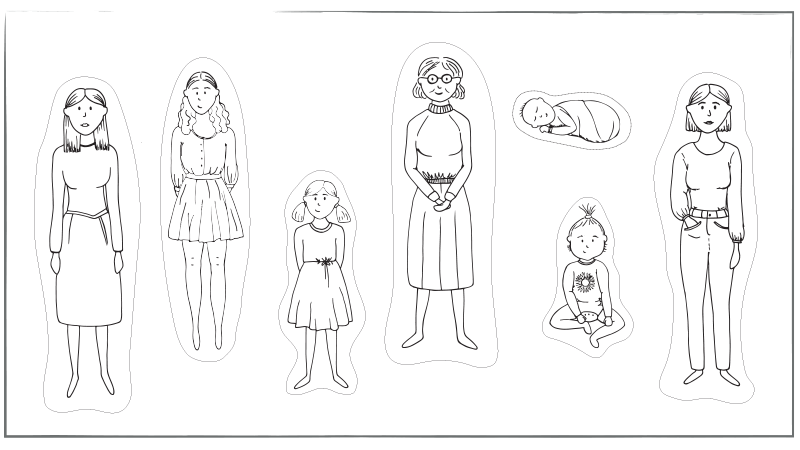Short description of the topic
Self-portraits, created in successive time intervals in standard conditions over a period of time help children to notice and monitor their development.
Learning outcomes
-
Competencies
- Personal growth: self-esteem, self-respect, accepting oneself and others
- Visual competence: perceiving differences
- Organization and planning: long-term planning, patience
-
Target group
2 years and up- a group of up to 15 people
-
Required materials
- Camera
- Computer
- Uniform background
- Tripod (strongly recommended)
-
Materials
- An illustration of the stages of life – cut out and arrange in the correct order
- Portraits of people taken when they were young and old: http://www.janlanger.net/en/Stoleti-cesi?img=1

Download
(.pdf 195.28 KB)
Description of the activity (step by step)
Preparation:
Talk with the children about growing up and how this process reflects on changes in our personal appearance. How does the passing of time affect our hair, height, face shape, etc.? Which physical characteristics stay the same? Does photography enable us to document and monitor our changes? How quickly do said changes occur?
Implementation:
Arrange with the children to take photos of their portraits (faces) at monthly intervals (e.g. the first Monday of the month) throughout the year to monitor the changes that will take place. Together with the group, find a suitable space that will have approximately the same illumination at a certain time of day throughout the entire year (it can be illuminated with artificial light but it is not recommended that the sun's rays fall directly on it). Place a neutral background on the wall with a tape measure on which the symbols (numbers) that are to indicate body height should be visible clearly. On the background to the left or right of the tape measure, mark a point (line) on which the children, as portrayed, will lean the back of their heads. At a distance of about one meter from the background, set up the tripod and your camera to take portraits of children. Adjust the height of the camera so that it matches the height of the subject's eyes. Use the zoom to determine the angle of view which ensures that only the child's face is captured in the photo. On the background, mark the area of the viewing angle with a pencil or a pen (e.g. by making a line) on the edge unobtrusively, so that it will be possible to take photos under the same conditions in the following versions. For the same reasons, mark on the floor (e.g. with duct tape) the point where the tripod is currently installed and is to be installed in future sessions.
Have the children approach the background one by one with the top of their heads against the marked point. They should try to keep their facial expression neutral (no grimaces). The other children take turns pressing the shutter button so that in the end, all the children’s portraits have been taken. Save the photos to a computer and rename them so that the title of the photo contains the serial number, the identity of the subject, and the time the photo was taken (e.g. 1_Sara_ Novak_January2020). The photographic activity described above is performed or repeated once a month throughout the year or longer. Photographs can be printed in a suitable size and pasted on a poster. At the end of the year, you can make a video by playing all the portraits in sequence.
Reflection:
Children look at, describe, and compare portraits of themselves and their peers. While doing so, the participants talk about their relationship with themselves and their own development.
Variations and additional ideas
Children may bring pictures from family albums which will be of help to them when talking about growing up and changing.
Background information and didactical perspective
The present activity helps develop and differentiate the child's self-image, including the perception and attitude towards external appearance. Long-term implementation or repetition of activities let children better understand the time dimensions of development, as well as the emergence of personal changes.


